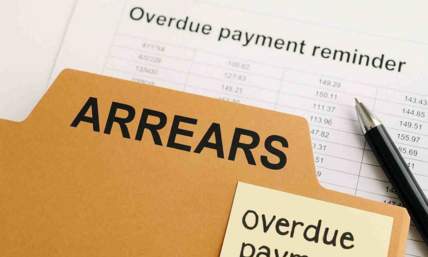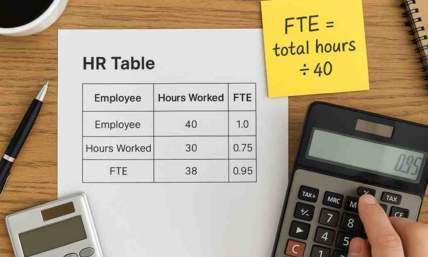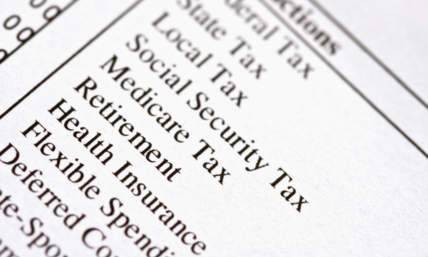What is Form 4562?
Form 4562: Depreciation and Amortization is a tax document issued by the Internal Revenue Service (IRS) that allows taxpayers to claim deductions for the depreciation or amortization of an asset, expense specific property under Section 179, and report details on the business or investment usage of vehicles and other designated assets.
When individuals or businesses acquire assets for their operations, the IRS typically doesn't permit them to deduct the entire cost as a business expense in the initial year. Instead, they can apportion their costs annually by claiming a depreciation deduction, which is reported on IRS Form 4562.
Both tangible assets, such as buildings, and intangible assets, like patents, can be claimed for deductions. However, Section 179 property, which must be actively employed in conducting business, cannot encompass investment properties, hotels, or assets primarily held outside the United States.
Who needs to file Form 4562?
Unless specified otherwise, submit Form 4562 if you are claiming any of the following:
-
Depreciation for property put into use during the 2022 tax year.
-
A Section 179 expense deduction, which may include carryovers from prior years.
-
Depreciation on any vehicle or other listed property, irrespective of when it was placed in service.
-
A deduction for any vehicle reported on a form other than Schedule C (Form 1040), Profit or Loss From Business.
-
Depreciation on a corporate income tax return, excluding Form 1120-S.
-
Amortization of costs that commence during the 2022 tax year.
-
If you are an employee claiming job-related vehicle expenses using either the standard mileage rate or actual expenses, use Form 2106, Employee Business Expenses, for this purpose.
Who does not need to file Form 4562?
Form 4562 is not necessary if you opted for the mileage deduction for a vehicle instead of depreciation. In such cases, utilize Section 4 of Schedule C.
For each business or activity on your return that requires Form 4562, file a separate form. If additional space is needed, attach extra sheets. However, complete only one Part I in its entirety when calculating your Section 179 expense deduction.
How do I file Form 4562?
Filers must provide their name, taxpayer identification number, and the business activity for which the form is being submitted.
Part I of the form addresses the Election to Expense Certain Property Under Section 179. This deduction applies to tangible personal property, such as machinery or equipment, and real, qualified property. Part II covers the special depreciation allowance and other depreciation, excluding listed property. Part III is designated for MACRS depreciation, where assets are allocated to a specific asset class, which is associated with a depreciation period.
In addition to the standard sections, Form 4562 also offers guidance on listed property and amortization. Part IV deals with the summary of listed property, while Part V focuses on listed property depreciation and reporting. Lastly, Part VI covers amortization of certain intangible assets, such as the costs of starting a business, goodwill, and specific other intangibles.
If more space is required, attach additional sheets. However, when calculating your Section 179 expense deduction, ensure that only one Part I is completed in its entirety.
Where do I file Form 4562?
Form 4562, Depreciation and Amortization, is used to claim deductions for depreciation or amortization of business assets. This form is not filed separately; instead, you attach it to your primary tax return form. The specific form you need to file it with depends on your tax situation:
-
Individual taxpayers (sole proprietors): Attach Form 4562 to your Form 1040, U.S. Individual Income Tax Return, or Form 1040-SR, U.S. Tax Return for Seniors. Report the depreciation on Schedule C (Form 1040), Profit or Loss from Business, or Schedule E (Form 1040), Supplemental Income and Loss, as applicable.
-
Partnerships: Attach Form 4562 to Form 1065, U.S. Return of Partnership Income.
-
S Corporations: Attach Form 4562 to Form 1120-S, U.S. Income Tax Return for an S Corporation.
-
C Corporations: Attach Form 4562 to Form 1120, U.S. Corporation Income Tax Return.
-
Estates and Trusts: Attach Form 4562 to Form 1041, U.S. Income Tax Return for Estates and Trusts.
Once you have completed Form 4562 and attached it to the appropriate tax return form, submit it to the IRS by mail or electronically. The specific mailing address will depend on your state of residence and whether you are including a payment with your return. You can find the appropriate mailing address on the IRS website or in the instructions for the primary tax return form.
Remember, you can also file your tax return electronically, which is the preferred method for many taxpayers. The IRS encourages e-filing because it is faster, more secure, and reduces the chances of errors. If you choose to e-file, you won't need to worry about finding a mailing address, as the software will submit the return and the attached Form 4562 directly to the IRS.
What are the frequently asked terms around Form 4562?
Depreciation
Depreciation is an annual deduction that enables you to recover the cost or other basis of your business or investment assets over a specified number of years. Depreciation begins when you first utilize the property in your business or for income generation, and concludes when the property is taken out of service, its entire depreciable cost or basis is deducted, or it is no longer used for business or income production.
Typically, the following types of property can be depreciated:
-
Tangible assets, including buildings, machinery, vehicles, furniture, and equipment.
-
Intangible assets, such as patents, copyrights, and computer software.
Land cannot be depreciated as an exception to this rule.
Accelerated Cost Recovery System
The Accelerated Cost Recovery System (ACRS) is applicable to property first utilized before 1987. ACRS refers to the tax regulations that enable taxpayers to recover the cost of property used in a trade or business or for generating income through depreciation deductions. These rules are compulsory and typically apply to tangible property placed in service between 1980 and 1986. If you placed property in service during this timeframe, you must continue calculating your depreciation under ACRS.
ACRS comprises accelerated depreciation methods as well as an alternative ACRS method that could have been chosen. The alternative ACRS method employs a recovery percentage based on a modified straight-line approach. For more information, refer to the instructions for line 16. A comprehensive explanation of ACRS can be found in IRS Publication 534.
Modified Accelerated Cost Recovery System
The Modified Accelerated Cost Recovery System (MACRS) is the present accelerated depreciation method mandated by the tax code. With MACRS, assets are categorized into classes that determine the number of years over which the asset's cost will be recovered. Each MACRS class follows a pre-established schedule, indicating the percentage of the asset's cost to be depreciated annually. A thorough analysis of MACRS can be found in Chapter 4 of IRS Publication 946.
Section 179
Section 179 property refers to assets that you purchase for use in the active conduct of your trade or business, and includes the following types:
-
Qualified Section 179 real property. For more information, refer to the special rules for qualified Section 179 real property provided later in the document.
-
Tangible personal property, such as cell phones, similar telecommunication equipment, and air conditioning or heating units (e.g., portable air conditioners or heaters). Tangible personal property may also include certain assets used primarily for furnishing lodging or in association with lodging provision (excluding those specified in section 50(b)(2)).
-
Other tangible property (excluding buildings and their structural components) used as: (a) an essential part of manufacturing, production, extraction, or providing transportation, communications, electricity, gas, water, or sewage disposal services; (b) a research facility related to any of the activities mentioned in (a) above; (c) a facility connected to any of the activities in (a) above for the bulk storage of fungible commodities.
-
Single-purpose agricultural (livestock) or horticultural structures.
-
Storage facilities (excluding buildings and their structural components) used in conjunction with the distribution of petroleum or any primary petroleum product.
-
Off-the-shelf computer software.
Section 179 property excludes the following:
-
Property held for investment purposes (Section 212 property).
-
Property predominantly utilized outside the United States, with the exception of property described in Section 168(g)(4).
-
Property employed by a tax-exempt organization (apart from a Section 521 farmers' cooperative), unless the property is mainly used in a taxable unrelated trade or business.
-
Property utilized by a governmental unit or a foreign individual or entity, except for property used under a lease with a term shorter than six months.
Special rules apply to qualified Section 179 real property. You can choose to classify specific qualified real property placed in service during the tax year as Section 179 property. Refer to the Election for certain qualified Section 179 real property under Part I, provided later, for details on making this election. If the election is made, "Section 179 property" encompasses any qualified real property that is:
-
Qualified improvement property, as defined in Section 168(e)(6).
-
Any of the subsequent improvements to nonresidential real property placed in service after the initial date the nonresidential real property was first put into service (a) roofs. (b) heating, ventilation, and air-conditioning property. (c) fire protection and alarm systems. (d) security systems.
The following property is regarded as "qualified Section 179 real property":
If a deduction related to qualified Section 179 real property is disallowed due to the trade or business income limitation (refer to the Business Income Limit in Chapter 2 of Pub. 946) for 2022, it can be carried forward to 2023. Consequently, the amount of any disallowed Section 179 expense deduction for 2022 attributable to qualified Section 179 real property will be reported on line 13 of Form 4562.
Amortization
Amortization resembles the straight-line depreciation method, as it permits an annual deduction to recover specific costs over a fixed duration. Costs that can be amortized include those associated with starting a business, goodwill, and certain intangible assets.
Listed Property
Listed property generally encompasses the following:
-
Passenger automobiles weighing 6,000 pounds or less. See the limits for passenger automobiles provided later.
-
Other transportation property, if its nature is conducive to personal use, such as motorcycles, pickup trucks, SUVs, etc.
-
Property utilized for entertainment or recreational purposes, including photographic, phonographic, communication, and video recording equipment.
Exceptions to listed property include:
-
Photographic, phonographic, communication, or video equipment used solely for a taxpayer's trade or business or at the taxpayer's regular business establishment.
-
Computers or peripheral equipment used exclusively at a regular business establishment and owned or leased by the person operating the establishment.
-
An ambulance, hearse, or vehicle employed for transporting people or property for compensation or hire.
-
Any truck or van put into service after July 6, 2003, that qualifies as a nonpersonal use vehicle.
For the exceptions mentioned above, a section of a taxpayer's home is considered a regular business establishment only if it meets the criteria for deducting expenses related to the business use of a home. However, for any property listed in the above, an employee's regular business establishment is their employer's regular business establishment.
Commuting
Commuting is generally defined as travel between your home and a work location. However, travel meeting any of the following conditions is not considered commuting:
-
You have at least one regular work location away from your home, and the travel is to a temporary work location within the same trade or business, regardless of the distance. Typically, a temporary work location is one where your employment is expected to last one year or less. For more information, refer to Pub. 463.
-
The travel is to a temporary work location outside the metropolitan area where you live and normally work.
-
Your home serves as your principal place of business for the purpose of deducting expenses related to the business use of your home, and the travel is to another work location within the same trade or business. This applies regardless of whether the location is regular or temporary and irrespective of distance.
Alternative Minimum Tax (AMT)
Depreciation might be an adjustment for the AMT. However, in several cases, no adjustment is required. Refer to Form 6251, Alternative Minimum Tax—Individuals; Schedule I (Form 1041), Alternative Minimum Tax—Estates and Trusts; and the corresponding instructions.
Recordkeeping
With the exception of Part V (pertaining to listed property), the IRS does not mandate the submission of detailed information regarding the depreciation of assets placed in service during prior tax years with your return. Nevertheless, the data necessary to calculate your depreciation deduction (basis, method, etc.) must be included in your permanent records.
If you need to produce pay stubs for your employees, you can try out the online paystub generator.













